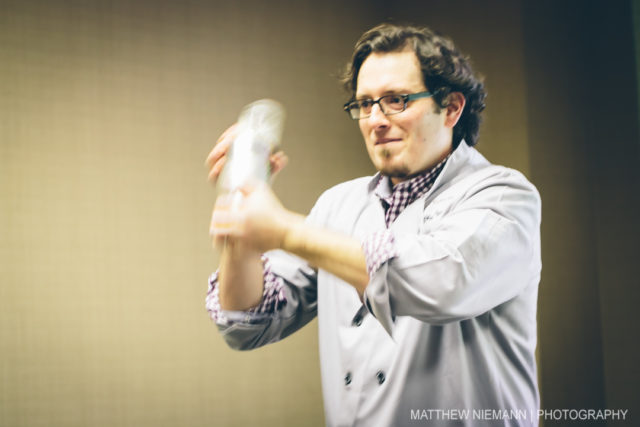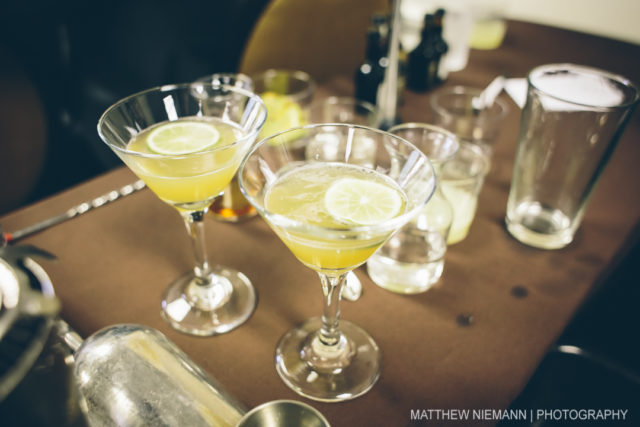
After reading SA Flavor these past two weeks, you probably think that the San Antonio Cocktail Conference is all about indulging in drinks and eats. Well my friend, they don’t have the word “conference” in their name for nothing. It was time to learn a little something in the Mixology 101 class. And what better way to get educated first thing on a Saturday morning with a teacher who goes by the name “The Cocktail Guru?”
With over 15 years in the hospitality industry, Jonathan Pogash travels the world sharing his insight and experience as a consultant to bartenders, restaurants and beverage companies. While many of the classes at the Cocktail Conference are tailored for industry insiders, this one was geared towards novices and hobbyists. Pogash took us through the history and resurgence of the cocktail movement, while peppering in information to craft the perfect drink.

The basic building blocks of the majority of our beloved, classic cocktails is the following recipe:
- 2 Parts Strong: your base ingredient of the cocktail, such as whiskey, gin, tequila, vodka or another spirit
- 1 Part Sweet: a simple syrup, honey, agave or any other sweetner
- 1 Part Sour: lemon, lime, orange or another citrus
While it may look quite simple, this is the formula that is responsible for the entire movement. But there are still plenty of other considerations to make, such as ice, one of the most overlooked ingredients in a cocktail.
Selecting the right type of ice for the drink is crucial—if the drink is to be shaken, you must pile the ice into the mixing glass so that you can quickly cool down the drink with little dilution. And when it is time to shake, you don’t do a halfhearted shake or two. Pogash taught us to vigorously shake the drink for a count of eight “Mississippis.” While it may seem like an eternity (who knew that making a drink could be a workout?), this step is crucial to enable the ice to bring the drink down to the proper temperature while without watering down the cocktail too much.

Pogash taught our class several other rules of thumb. He believes that garnishes should always compliment the drink either with flavor or aroma—they shouldn’t be used for purely aesthetic reasons. Also, he stressed the importance of using jiggers to get a consistent pour of the alcohol and ingredients. Evenness across all drinks is what separates the contenders from the pretenders.

Similar to color theory (you know, how red and green are complementary colors), the Cocktail Guru told us that there are “flavor wheels” to help you match up complementary flavors. This can help the amateur with pairing different tastes in their own signature cocktail. The wheel is a good guide, but similar to how some visual artist push the limits of color and texture, you can always try to mix and match new things with cocktails. However, don’t do that the first time for a dinner party!

At the end of his presentation, Pogash opened up a bar filled with a variety of spirits, liquors and fresh ingredients so that we could each create our very own craft cocktail. I had to hurry through this exercise to catch the boat that was soon departing for the Treaty Oak Whiskey Bon Voyage (more on this in a future article), and my rush was evident in the cocktail. It was terrible.
Although I wish my creation had turned out a bit more drinkable, I’m looking to refine my new found knowledge at home. After all, practice makes perfect.
Sign up for the SA Flavor Newsletter for all the best of SA without the spam! And be sure to shop the SA Flavor Store for the best Fiesta Medals, stickers, shirts and more!